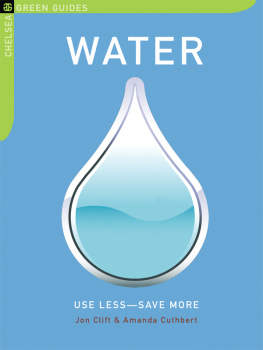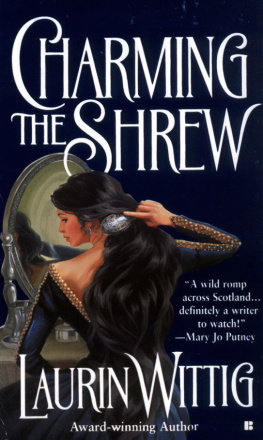Laurin - How Vertebrates Left the Water
Here you can read online Laurin - How Vertebrates Left the Water full text of the book (entire story) in english for free. Download pdf and epub, get meaning, cover and reviews about this ebook. City: Berkeley, year: 2010, publisher: University of California Press, genre: Religion. Description of the work, (preface) as well as reviews are available. Best literature library LitArk.com created for fans of good reading and offers a wide selection of genres:
Romance novel
Science fiction
Adventure
Detective
Science
History
Home and family
Prose
Art
Politics
Computer
Non-fiction
Religion
Business
Children
Humor
Choose a favorite category and find really read worthwhile books. Enjoy immersion in the world of imagination, feel the emotions of the characters or learn something new for yourself, make an fascinating discovery.

How Vertebrates Left the Water: summary, description and annotation
We offer to read an annotation, description, summary or preface (depends on what the author of the book "How Vertebrates Left the Water" wrote himself). If you haven't found the necessary information about the book — write in the comments, we will try to find it.
Laurin: author's other books
Who wrote How Vertebrates Left the Water? Find out the surname, the name of the author of the book and a list of all author's works by series.
How Vertebrates Left the Water — read online for free the complete book (whole text) full work
Below is the text of the book, divided by pages. System saving the place of the last page read, allows you to conveniently read the book "How Vertebrates Left the Water" online for free, without having to search again every time where you left off. Put a bookmark, and you can go to the page where you finished reading at any time.
Font size:
Interval:
Bookmark:
How Vertebrates Left the Water
Left the Water
Michel Laurin

University of California Press, one of the most distinguished university presses in the United States, enriches lives around the world by advancing scholarship in the humanities, social sciences, and natural sciences. Its activities are supported by the UC Press Foundation and by philanthropic contributions from individuals and institutions. For more information, visit www.ucpress.edu .
Digital version available at the University of California Press website.
University of California Press
Berkeley and Los Angeles, California
University of California Press, Ltd.
London, England
English edition 2010 by the Regents of the University of California
Systmatique, paleontologie et biologie volutive moderne: lexemple de la sortie des eaux chez les vertbrs.
First published in the French language by Ellipses. 2008 Edition Marketing S.A.
Library of Congress Cataloging-in-Publication Data
Laurin, Michel.
[Systmatique, palontologie et biologie volutive moderne. English]
How vertebrates left the water / Michel Laurin.
p. cm.
Includes bibliographical references and index.
ISBN 978-0-520-26647-6 (cloth : alk. paper)
1. VertebratesEvolution. I. Title.
QL607.5L3813 2010
596.13'8dc22
2010027056
16 15 14 13 12 11 10
10 9 8 7 6 5 4 3 2 1
The paper used in this publication meets the minimum requirements of ANSI/NISO
Z39.48-1992 (R 1997)(Permanence of Paper).
Front cover: Paleozoic amphibians. Artist: Douglas Henderson.
Back cover: Seymouria sanjuanensis. Photographer: David Berman.
Used with permission of the Carnegie Museum of Natural History and The Museum der Natur, Gotha, Germany.
I dedicate this book to my wife, Alexandra, and my
daughter, Pnlope, who must have both felt
neglected sometimes when I spent long hours in
front of my computer working on this book and
related projects.
Life appeared in the oceans in a past so distant that it is difficult to imagine. The exact age of life on Earth is debated because the structures once considered to represent the oldest fossils (remains of ancient organisms, or traces which they left) have been reinterpreted as mineral crystallization in microscopic fractures by some paleontologists (this reinterpretation is itself debated). The first life forms were very simple and resembled extant bacteria, some of which formed stromatolites, the oldest of which are about 3 Ga (billion years) old (). Stromatolites are still being formed today in some coastal regions. For at least 1.5 Ga, life remained in its native aquatic environment. Thus, for the greatest part of the history of the biosphere, life remained in water, diversified, and radiated into several ecological niches. The oceans and seas teemed with life well before the first animal ventured out of the water.
In the last few hundreds of millions of years (Ma), life has come onto dry land. This transition was very gradual; it was initiated by simple life forms, such as bacteria. Later, more complex organisms ventured onto land: lichens, simple green plants (the first of which were mosses, horsetails, and lycopods), arthropods (arachnids, insects, crustaceans, etc.), mollusks (slugs and snails), annelids (earthworms, leeches), and vertebrates. Despite their late arrival in this new environment, vertebrates will be emphasized in this book because they include humans and nearly all our domestic animals (dogs, cats, birds, cattle, sheep, pigs, horses, etc.). Thus, most readers are probably more interested in vertebrates than in any other group.

Figure p.1. Cnidarians. The first metazoans (animals with several cells) were all marine. Cnidarians are among the oldest and simplest metazoans. Reproduced from Haeckel (1904).
The conquest of dry land is a fascinating evolutionary problem because all systems and organs of our distant ancestors had been adapted to their aquatic habitat through hundreds of millions of years of evolution. This episode in the history of life on Earth is probably one of the most difficult to understand, and precisely because of this, it is no doubt one of the most interesting. The problems that our ancestors had to solve were so severe that some creationists have used them to try to cast doubt on the scientific study of biological evolution and to try to strengthen the case of their creationist explanation (this word is not entirely appropriate in this context) of biodiversity. We will see that scientists have formulated several theories that explain this fascinating history, and that one of the main challenges of modern paleontology consists of testing these theories through more or less indirect methods.
This book summarizes what we know about this history, without hiding the gaps that remain in our knowledge. It also presents the methods used by paleontologists, these detectives of life history, to reconstruct our distant past. To avoid the excessive simplifications that too often reduce this type of book to just-so stories, a few technical terms, for which there is no vernacular equivalent, must be introduced. The reader should refer to the Glossary, which includes all these technical terms. Despite the modular organization of this book, I advise reading Chapter One, How Can We Reconstruct Evolutionary History? first. A brief section on extant vertebrates illustrates the surprising amount of data that can be extracted from contemporary species, but for obvious reasons, the emphasis of this synthesis is on fossils and the evolution of the first land vertebrates. Finally, in the conclusion, the reader will discover that, contrary to the Indiana Jones stereotype, paleontologists do not necessarily spend a great proportion of their time excavating fossils in the field, and that a major part of the most fundamental discoveries results from the study of fossils first described by older generations of scientists, or from sophisticated analyses of databases that centralize data that have long been available but used to be scattered.
This book is mostly for life and earth science students who want to learn the basics of modern paleontology, systematics, and evolutionary biology, or those interested in the history of the conquest of land by vertebrates. It requires little prior knowledge in this field. Some points are covered in sufficient detail to give the reader a sense of how science works, but this book does not attempt to cover all relevant facts, because this would result in a much larger work. Those who want to know more will find the key publications in the bibliography; they can also consult the exhaustive reviews of Devonian limbed vertebrates by Clack (2002, 2006). Another recent and very technical synthesis (Hall, 2007) covers the diversity, function, and evolution of fins and limbs and presents points of view not all of which are compatible with those found in this book (see Laurin, 2007). The history of our ideas about the origin and first evolutionary radiation of limbed vertebrates was recently summarized by Coates et al. (2008). Finally, a detailed review of the hypotheses about the origin of extant amphibians was recently published (Anderson, 2008), along with a commentary presenting a different perspective (Marjanovi and Laurin, 2009).
This is a translation of a book initially published in French (Laurin, 2008b). The text and bibliography were updated (several papers published in 2008 and 2009 were added), and a few references to especially important older studies were also added.
Next pageFont size:
Interval:
Bookmark:
Similar books «How Vertebrates Left the Water»
Look at similar books to How Vertebrates Left the Water. We have selected literature similar in name and meaning in the hope of providing readers with more options to find new, interesting, not yet read works.
Discussion, reviews of the book How Vertebrates Left the Water and just readers' own opinions. Leave your comments, write what you think about the work, its meaning or the main characters. Specify what exactly you liked and what you didn't like, and why you think so.









